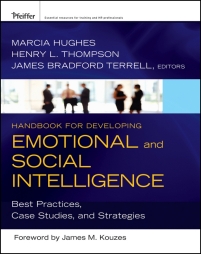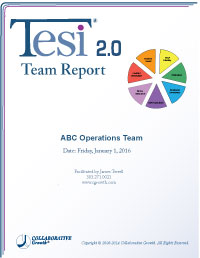The good life is a process, not a state of being.
It is a direction, not a destination.
Carl Rogers, On Becoming a Person
Give yourself one of the best gifts available – expand your resilience. Your well-being will benefit from the upgrade. Sustainable behavior change is a lifestyle change, not a whim. As you expand your resilience, your overall well-being will improve remarkably.
Noticing and managing our resilience calls for us to develop and regularly use the skill of mindfulness. Some might say that mindfulness and well-being are synonymous. Mindfulness contains the intention of the definition in the very word. While there are many more elaborate definitions, the Greater Good Science Center at the University of California captures it well:
Mindfulness means maintaining a moment-by-moment awareness of our thoughts, feelings, bodily sensations, and surrounding environment.
Scientist and leading scholar in the field of positive psychology, Barbara Fredrickson reports that in their entire research program in resilience they found that the key active ingredient supporting those with higher resilience is positivity, which includes openness and a better ability to keep things in perspective and see the bigger picture. The concepts of resilience and mindfulness intertwine and support one another. When we apply the two our well-being improves.
A frequent challenge raised by our coaching clients relates to managing their resilience. They may talk about putting up with one challenge after another as a new program is being unveiled until they finally lose their composure. Or the challenge may be significant personal issues that are taking so much of their energy and drawing upon their flexibility dramatically that when one more thing happens – at work, at home or anywhere they become unusually inflexible, angry or just walk away leaving things unresolved.
Stephan (not his real name) is a good example. Most of the time, things are fine; he can manage work and personal demands. He has a good education, a reliable job with mid-management responsibilities, and a loving family. Just like happens to most of us, each of these good parts have challenges. His parents are in their 80’s and require a lot of attention. Recently his dad was diagnosed with Alzheimer’s and his mom has arthritis to the point she can’t take care of him. His teenage children need a great deal of time. It’s hard, yet he keeps telling himself that in a few years it’ll be easier. For now, Stephan is committed to giving his all to helping his parents, his kids, serving at his church and then there’s his job. His position has a lot of stress with it and most weeks require 45 to 50 hours of work plus his commute. Usually he juggles everything well enough. Then his boss informed him that the big report he and his team have worked on for two months is needed in two days instead of the two weeks they were supposed to have to complete it well. Stephan hit the roof. He yelled at his boss, refused to meet the deadline. Told his staff to just quit and take the rest of the day off. It wasn’t a pretty picture. That was a few weeks ago. Coaching is helping Stephan work through the aftermath of his outburst, as well as what brought him to it. Our focus includes understanding his challenges and building ways to stay in touch with his resilience to guide his behavior.
Strategies for Expanding Resilience
You, just like Stephan, can choose from several strategies to expand and maintain your resilience. Six of the sixteen EQi skills particularly support resilience strength. Act now to support your health and well-being by following a resilience enhancing strategy such as:
- Meditation.
- Recognizing that you are a part of something purposeful that’s bigger than you.
- Expanding your happiness through gratitude or embracing and valuing your connections with others.
- Building your optimism by expecting what works to keep on happening and get even larger.
- Embracing your Bigger Yes – by living priorities that call for time with loved ones, time to exercise, time for you – all which expand your stress tolerance capacity.
- Perceiving yourself with healthy self-regard by being able to view your strengths. challenges, and neutral zones and feel good about who you are.
- Exercising your emotional self-awareness by noticing your emotions, recognizing how you feel and why and managing your responses. Throughout the day seek to call forth positive emotions.
Resilience is the ability to recover readily from illness, depression, or adversity; it’s a form of buoyancy. Fortunately, your resilience can be expanded – it’s a personal skill that may have some components of genetic predisposition but can be influenced and grown as one of your most reliable assets. However, it does require continuous upkeep. Growing the skill requires awareness and practice. Your journey is one of developing new habits that may not only change your social and psychological take on life but may well improve your health as well.
Six Emotional Intelligence Skills
There is a strong connection between the strength of your resilience and 6 of the 16 skills measured by the EQi 2.0: stress tolerance, emotional self-awareness, self-regard, optimism, happiness and flexibility.
These EI skills are ones that are more self-oriented rather than other-oriented because resilience is an internal state. You’ve probably heard that you need to take care of yourself before you have the strength and resilience to take care of others well. The metaphor most call to mind readily is when oxygen is needed on an airplane you need to put your own oxygen mask on before you start helping others. You know why – you’ll black out quickly and be a problem rather than a help if you don’t start with your mask. Life is that way as well. Though it may be easier for some to focus on the tasks, including attending to everyone else’s needs, you will be better in all ways if you start with you first – and then remember to keep prioritizing your needs!
Barbara Fredrickson’s Research
Dr. Barbara Fredrickson, author of Love 2.0 and Positivity, which we highly recommend, provides copious research on the beneficial effect of resilience and the field of positivity. Fredrickson speaks about changing people’s daily diets of positivity with the goal being to change what we notice and to influence the practice of our habitual positive and negative emotions. One effective strategy she emphasizes is loving kindness meditation. What’s different about Barbara’s work is that it primarily occurs in the laboratory – her laboratory and her joint work with many other leading scientists. The blessing of her research is she is documenting what so many coaches, trainers and others have believed to be true.
Research results by Barbara and her colleagues are documenting that there are improvements on cognitive, social, psychological and physical resources for people who use positivity and resilience enhancing practices. Whether you practice meditation or other resilience enhancing strategies, we encourage you to choose a practice or two from the list provided above or another resource you have and take good care of yourself.


 The good news about our 2.0 world is organizations are finally getting it – that is they are recognizing that if they place their top value on building emotional and social well-being for their employees and teams, they will gain the business and financial values of increased and sustainable productivity, better decisions, loyalty and best of all trust among their workforce. Ok, they get it, but how do they DO it? It isn’t hard, yet it does require intentional commitment and follow through. Fortunately there is a road map, the powerful tools of the
The good news about our 2.0 world is organizations are finally getting it – that is they are recognizing that if they place their top value on building emotional and social well-being for their employees and teams, they will gain the business and financial values of increased and sustainable productivity, better decisions, loyalty and best of all trust among their workforce. Ok, they get it, but how do they DO it? It isn’t hard, yet it does require intentional commitment and follow through. Fortunately there is a road map, the powerful tools of the 

 NBA forward Gordon Hayward of the Boston Celtics experienced a devastating ankle injury. Many players offered caring messages. The one by Los Angeles Lakers guard Kobe Bryant stands out. His advice distills the essence of applying emotional intelligence (EI) to life’s setbacks, challenges, and worries.. The Instagram message to Gordon Hayward:
NBA forward Gordon Hayward of the Boston Celtics experienced a devastating ankle injury. Many players offered caring messages. The one by Los Angeles Lakers guard Kobe Bryant stands out. His advice distills the essence of applying emotional intelligence (EI) to life’s setbacks, challenges, and worries.. The Instagram message to Gordon Hayward: 


 Does your team expand its skills when faced with conflict? One of the questions on the
Does your team expand its skills when faced with conflict? One of the questions on the  The national and international political conversations are making it even tougher to be positive and productive in the workplace! If your team ever suffers from cynicism, a lack of trust, or poor communication, please attend our new webinar:
The national and international political conversations are making it even tougher to be positive and productive in the workplace! If your team ever suffers from cynicism, a lack of trust, or poor communication, please attend our new webinar: 


